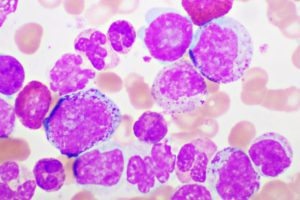Diamond-Blackfan syndrome or anemia (DBA) is an extremely uncommon blood illness that affects the bone marrow and inhibits the generation of red blood cells. It is a genetic condition caused by the mutation or alteration of certain genes. The anemia of Diamond-Blackfan is a chronic illness. Those with this illness will require lifelong medical attention and assistance.
The majority of youngsters develop symptoms fairly early in life. Consequently, Diamond-Blackfan anemia (DBA) is typically detected prior to a child’s first birthday, but it can manifest at any age. The most frequent signs of DBA are:
- Pale skin
- Low energy or a tendency to tire easily (fatigue); newborns may become fatigued when nursing.
- Breathlessness or trouble breathing (dyspnea)
Approximately 40% of children with DBA may also exhibit at least one of the following physical characteristics:
- Short stature
- Head, face, and neck deviations
- Thumb anomalies
- Renal or cardiac defects

How common is it?
DBA is unusual. It affects around 5 to 7 newborns per million globally. Each year, around 40 children in the United States and Canada are newly diagnosed with DBA. US and European DBA registries are actively monitoring over 2,000 DBA patients.
DBA is equally prevalent in males and females. It can occur at any age, but is often diagnosed before the first birthday.
How is the Diamond Blackman syndrome identified?
Typically, DBA is diagnosed when your child’s doctor discovers signs or symptoms of anemia during a regular physical or blood test. Blood sample testing and bone marrow testing are the two most essential diagnostic procedures for DBA. The necessary findings for a diagnosis are:
- Anemia before the age of 1 year
- Blood sample indicating that the anemia is macrocytic, which indicates that the red blood cells are bigger than usual
- Normal white blood cell and platelet counts in the blood specimen
- Insufficient reticulocytes, freshly formed red blood cells
- A sample of bone marrow with few cells that will grow into red blood cells
Family history, gene abnormalities, and birth malformations are additional facts that support a diagnosis of DBA.
Treatment
Corticosteroids are a viable treatment for anemia in DBA. In a big research including 225 patients, 82 percent initially responded to this medication, despite the presence of several adverse effects. Some individuals remained sensitive to corticosteroids, but the effectiveness of others diminished. Blood transfusions can also be utilized to treat DBA patients with severe anemia. There may be remission periods in which transfusions and steroid treatments are not necessary.
Hematological features of DBA are curable by bone marrow transplantation (BMT). This method may be explored for transfusion-dependent individuals, as repeated transfusions can induce iron excess and organ damage. However, the deleterious effects of BMTs may surpass those of iron excess. One patient demonstrated the benefit of leucine and isoleucine supplementation in a 2007 research.
Complications
People with DBA are more susceptible to developing certain diseases and ailments, such as blood and bone marrow cancer (acute myeloid leukemia), bone cancer (osteosarcoma), and other problems in which the bone marrow doesn’t produce enough healthy blood cells (myelodysplastic syndrome).



